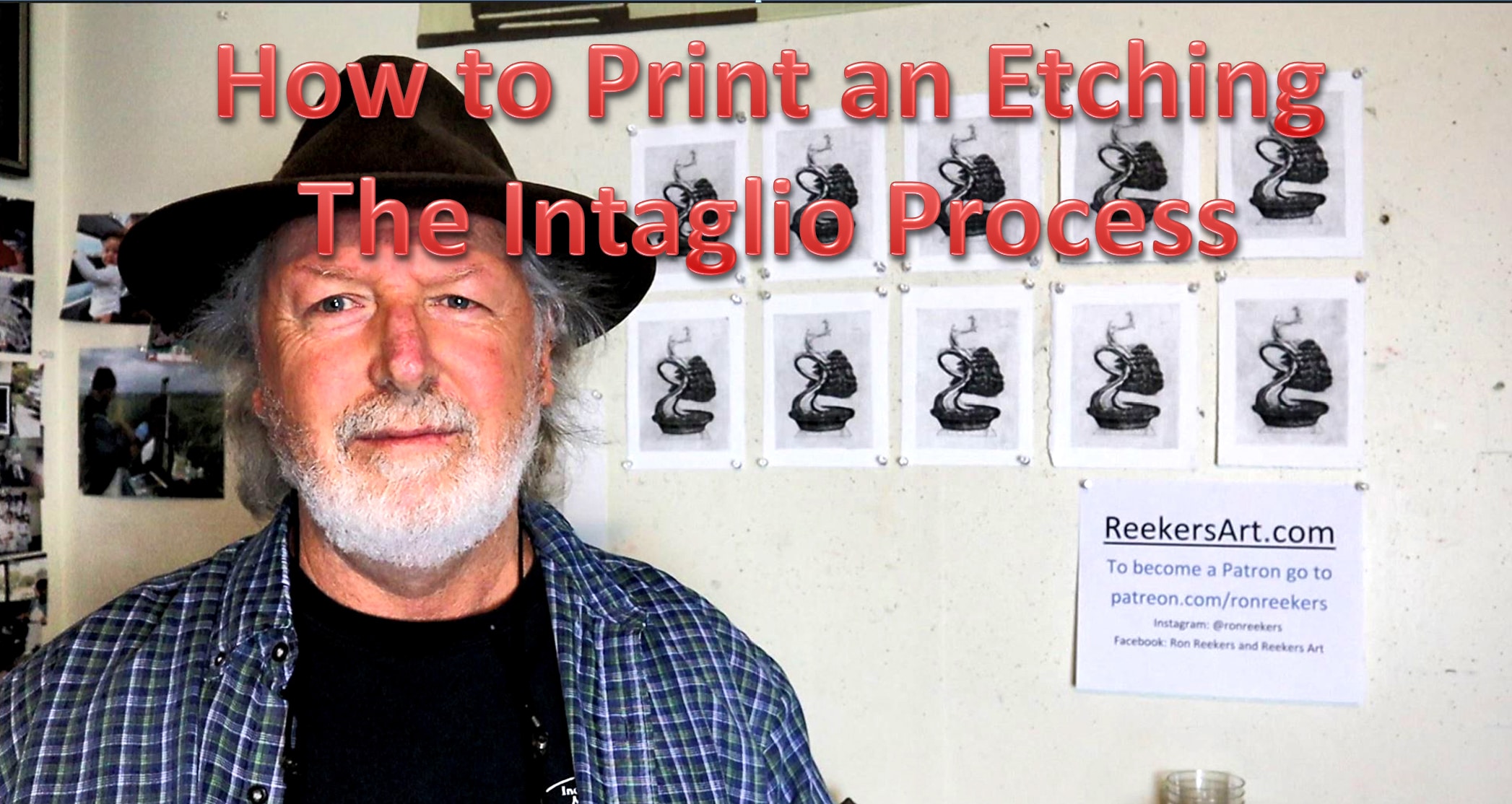
This video is a detail instructional video on how to print from an etched plate. The process is called “Intaglio” which is a process where the image is produced from the etched portion of the plate by apply ink to the plate. The video itself was a live video produced with the help of my friend Richard Chau-Davis and can be seen in full at https://www.crowdcast.io/e/rreekers-1. The video is an edited version with descriptions along to way to help the viewer understand the process better.
We start with the paper preparation and how to tear the paper instead of cutting with scissors to create the size we need. The paper used is Arches BFK Rive, fine grain, acid free 280g, 100% cotton page (sometimes referred to a rag paper). After the paper is torn to size we need it is put into a vat of water for approximate 20 minutes minimum.
We move to the inking station and begin the preparation of the ink. I start by applying Art Cream Guard from Winsor Newton to my hand and putting on Latex or Nitrile gloves. The ink used here is Graphic Chemical and Ink co. 1lb Perfect Palette Intense Black. We first begin by warming the ink up by continually mixing it on the glass palette using a putty knife. I demonstrate the effect of the ink by adding clear oil (Huile Claire from Charbornel) which will make the ink less viscous (more runny); this is done partially if your ink is too stiff. In order to reduce the “oiliness” of the ink I add Magnesium Carbonate purchased from Daniel Smith, it absorbs some of the oil without compromising the ink opacity. A tack test is done by placing the putty knife on the ink and then lifting to see the length of the ink stream. Once the right viscosity is made (personal preference) I then add Vaseline to reduce the task (stickiness of the ink), again this is done to feel. Finally, I add Easy Wipe from Graphic Chemical and Ink co. This will make the removal of the ink from the plate surface easier. Note: there are inks that don’t need to be modified, but in my experience, temperature and relative humidity plays a big part in the inks characteristics, so understanding these techniques for modifying your ink is important.
Once the ink is prepared I can then ink the plate using cards (collected from the mail). I softly run the ink in all four directions to fully cover the plate. I clean up the edges using toilet paper and then ‘stamp’ the plate using old Yellow Paper pages to further distribute the ink evenly. In order to remove the ink from the copper surface I use Tarlatan (can be purchased at most print supply stores) and then graduate to Yellow Page paper and finally my palm (which is why I applied Guard Cream). The fat part of the palm lightly pats the plate surface. When all the ink from the surface is removed to my satisfaction I can now print the plate.
I have a Charles Brand press which I have preset to the height I need as well as mark the bed for the plate and paper placement. With clean hands (I tend to wash my hands before ever touching the paper) I remove the paper from the soaking tray and blot using clean towels. I have a large roller and usually roll back and forth about 3 times. The damp paper is then aligned and placed over the plate. I covered the paper with the press blankets and roll the press bar over the plate. The final product is the print!
A production of prints can then be made. I make a series of 100 prints in which all prints need to be exactly the same. I do each session in tens and remove any anomalous prints (these are later made into monoprints). In this way, the buyer is assured to have a print of the series without flaws. In addition, the Buyer is assured I printed all prints in the series by hand.
I hope this process is clear to the viewer. There are different methods available, but for me, this method works the best. Please email me at reekersart@gmail.com if you have any comments or questions.
Below is a list of material used in video:
Paper – Arches BFK Rives, Fine Grain, Acid Free, 100% Cotton, 280g
Vaseline Petroleum Jelly
Easy Wipe – Graphic Chemical and Ink co.
Ink – 1lb Perfect Palette Intense Black, Graphic Chemical and Ink co.
Huile Claire (Clear Oil) – Charbornel
Magnesium Carbonate – Daniel Smith
Art Guard Cream – Winsor Newton
Tarlatan
Flex Putty Knife – Huskey
Glass Scraper – Stanely
12” sq Glass Palette
Toilet Paper
Yellow Page
Cards
Latex or Nitrile Gloves